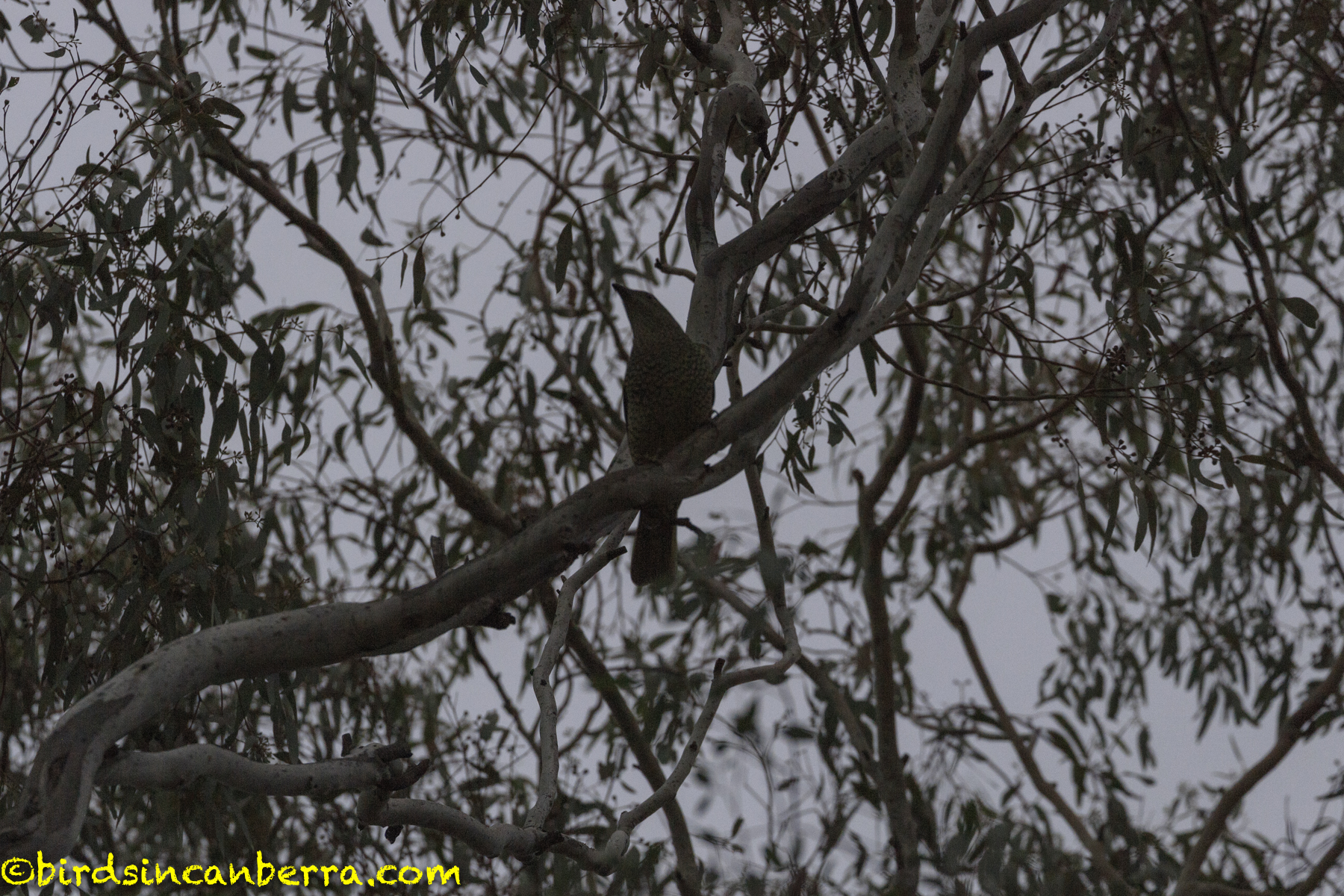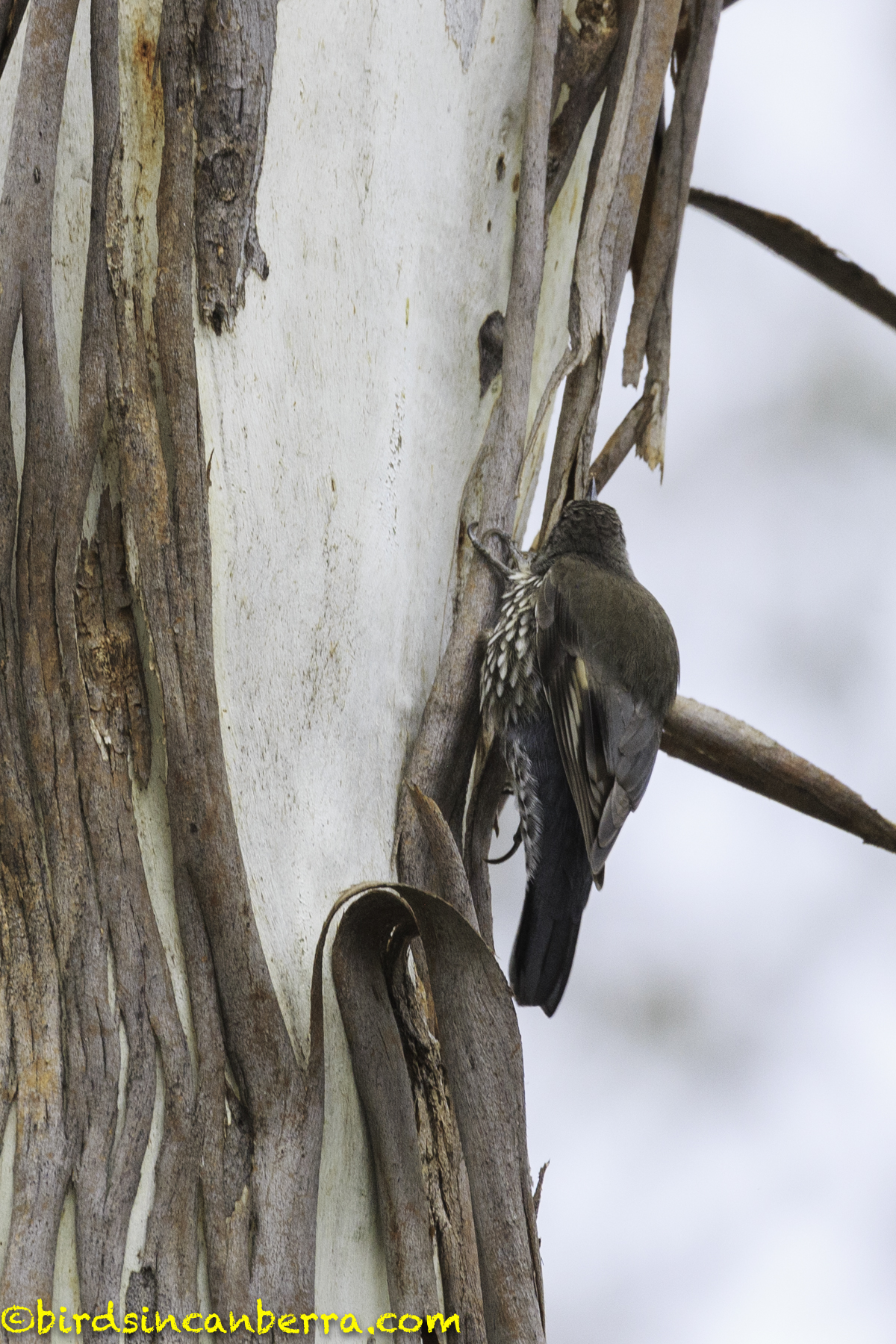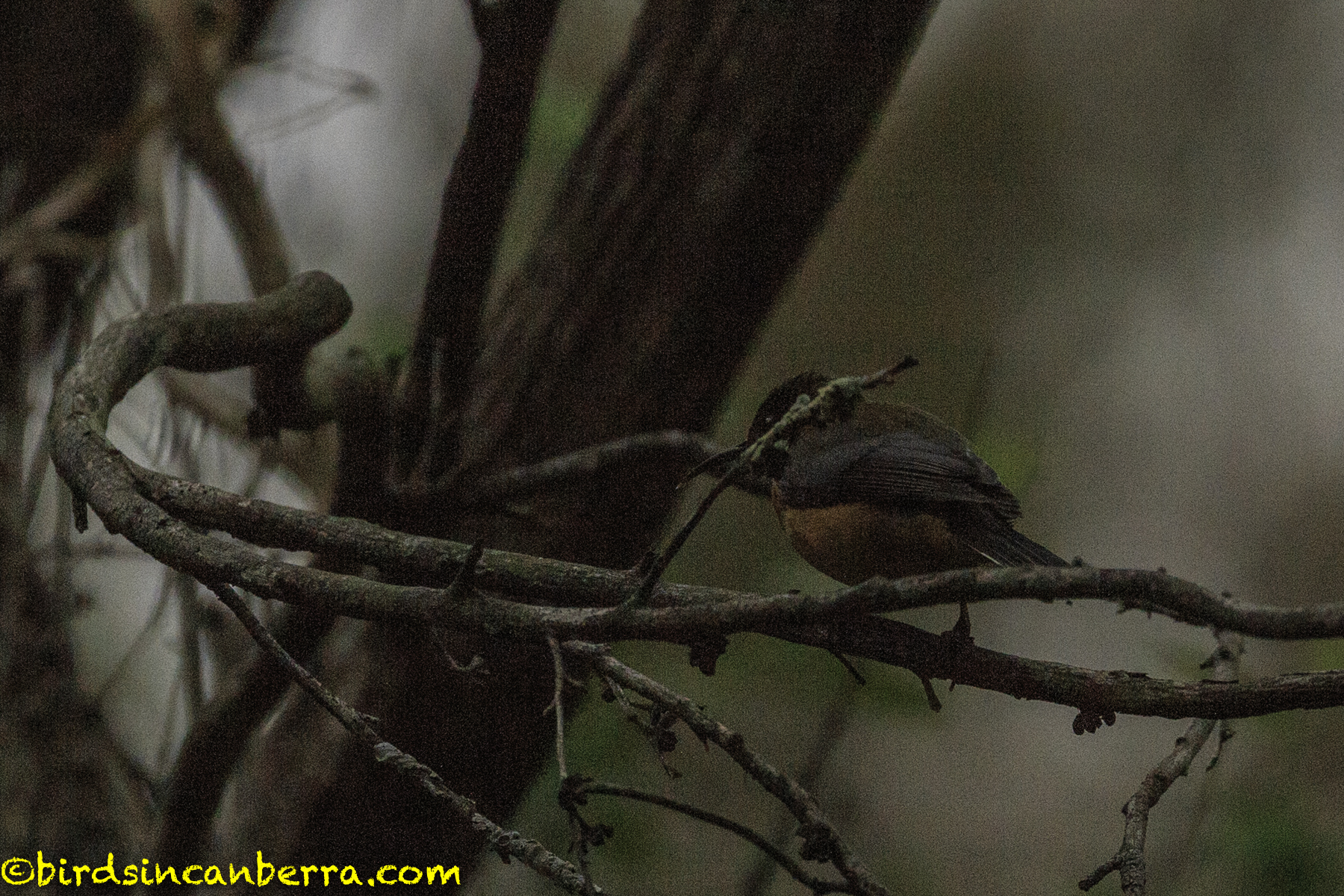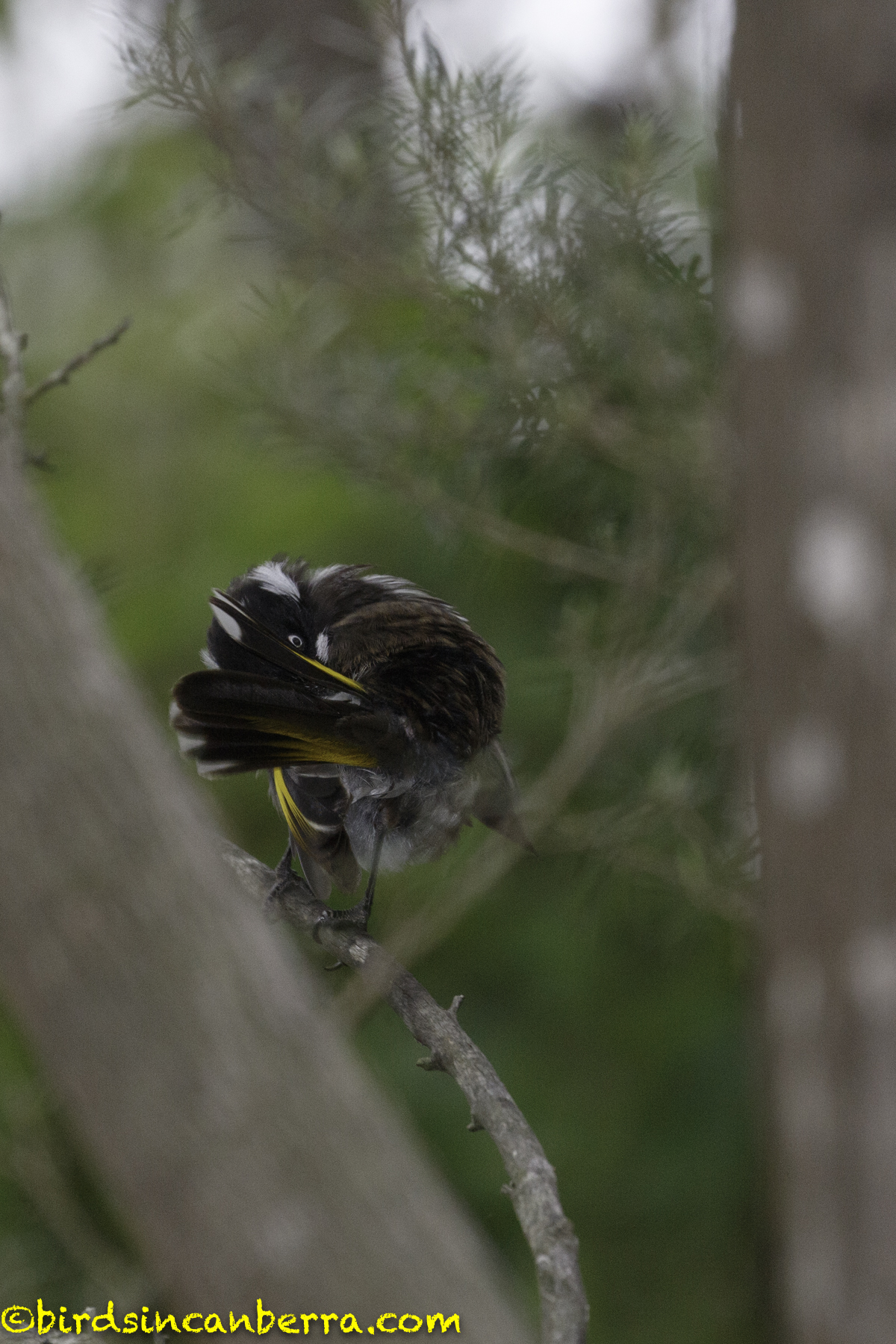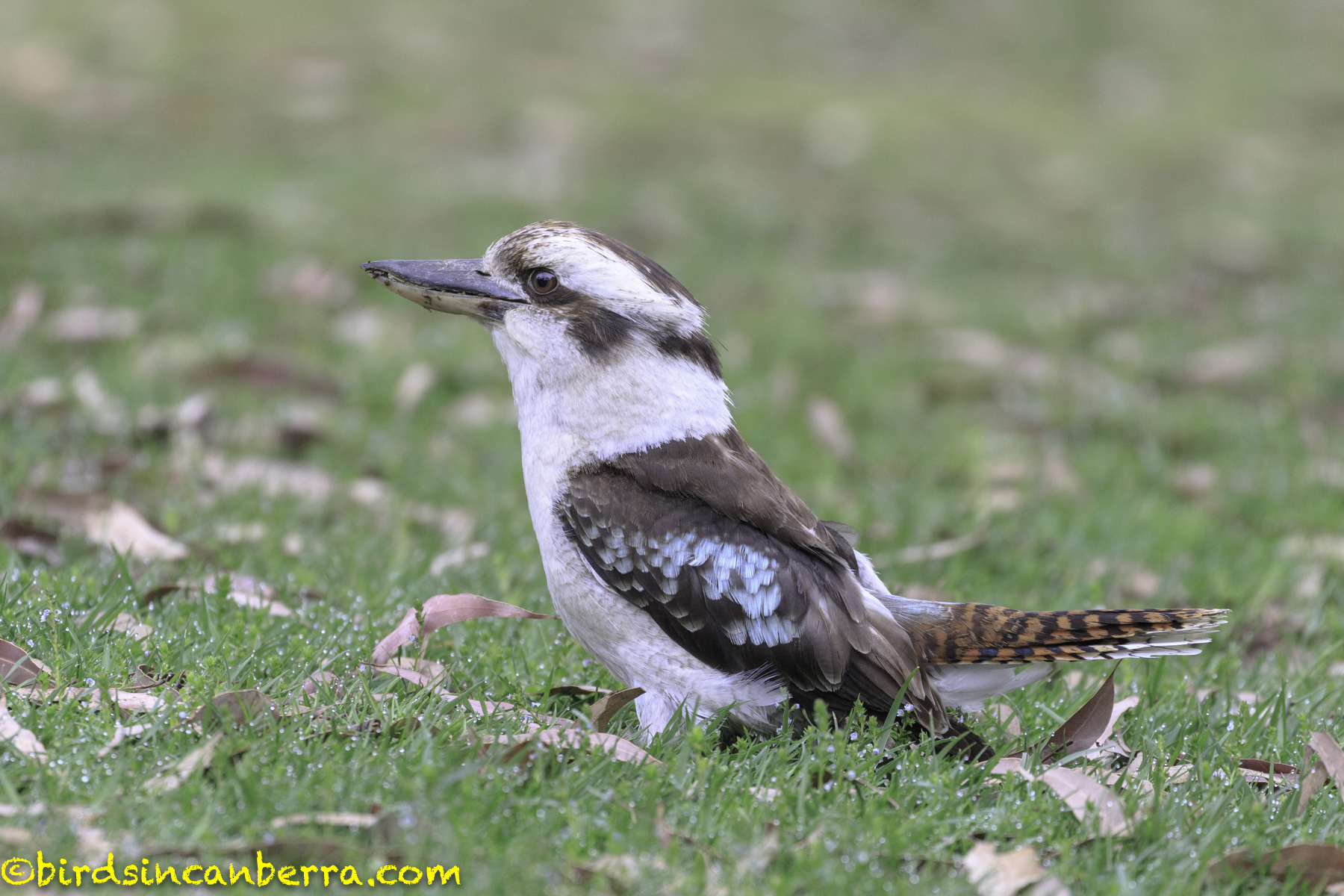I really wanted to return to the Australian National Botanic Gardens (ANBG) because the birds are so plentiful there. I was hoping to get a good photograph of an Eastern Spinebill. The gardens open at 8:30 so I started outside in the vegetation between the gardens and the Australian National University (ANU). Because this small patch of vegetation backs on to the botanic gardens it appeared to have a number of bird visitors. The weather in Canberra has been overcast for a while so it was not easy getting good photographs under a thick canopy, especially when my flash ran out of batteries and I had foolishly not packed any spares. I have since corrected that mistake. Even though I did not get as many pictures as I would have liked I was happy just watching the incredible birdlife. I saw New Holland Honeyeaters fly through the tight trees. I was equally impressed by the Eastern Spinebills, which seemed to jet through, even whizzing past my head when I had been standing still for a while. Once I entered the ANBG proper I failed in my attempt at photographing the spinebills but I did have a great opportunity to photograph some kookaburras. I could not spend too long in the gardens, as I had to get back home, but I am already looking forward to going back.
The proximity of Black Mountain Nature Reserve and the ANBG helps explain why this small patch of vegetation has such a rich variety of birdlife. The first bird I saw was a Satin Bowerbird, although it was high in the canopy so it was hard to tell if it was a female or a non-breeding male.
There were a number of Superb Fairy-wrens moving about and some of them appeared to be banded. Considering the ANU is in close proximity I wondered if this was part of a university study.
I was thrilled to see a White-throated Treecreeper. The first photo on the left was when I saw a bird well inside where the vegetation was thick and it was corkscrewing up on the inside of a spit in the tree. I had to use flash and even then it was weak. The right hand shot was in a more open location when it was climbing up a eucalyptus.
There were a number of Eastern Spinebills flying around. I did not realise how quickly they can fly. At one stage a pair almost flew into me as I stood quietly in an area where there were a number of birds winging through. These birds seemed to be very aerobatic, effortlessly avoiding me while they were moving at speed through tangled branches. Unfortunately I could not obtain a good picture of any of them.
This patch of vegetation was also home to some New-Holland Honeyeaters. They are also great flyers. In the first photo, top left, you can see that even though these birds primarily eat nectar from flowers they supplement their diet with insects.
There were two or three Silvereyes flying though the area as well.
Red Wattlebirds are very common in Canberra but when I saw this one perched on a wooden stump in the open I had to take a photograph. The sky was still overcast, hence why there. is little shadow on the bird. The colours stand out well in this photograph. The bird did not stay put long, it flew off to a tree.
When I entered the ANBG proper I was not looking and spooked a Laughing Kookaburra that had been on the ground. It flew off to some shrubs where it was mobbed by two Noisy Miners who drove it further away. I was annoyed at myself for having caused the bird such problems and I was also annoyed as I had missed a chance to photograph a species of bird I really like. I then noticed another Kookaburra sitting in a shrub. I carefully approached it, as it was low, so I did not want to scare it off. I thought I had spooked it as it took-off, but fortunately just to land on a nearby lawn where it found some food, photo one. It then returned to an awning where it took up a perch. The awning was nicely positioned close to me so I was able to get photos two to four. In photos three and four I was really concentrating on head shots. From these shots is easy to say these birds are large kingfishers although Kookaburras are more likely to eat small land vertebrates, like reptiles and frogs, than fish.

